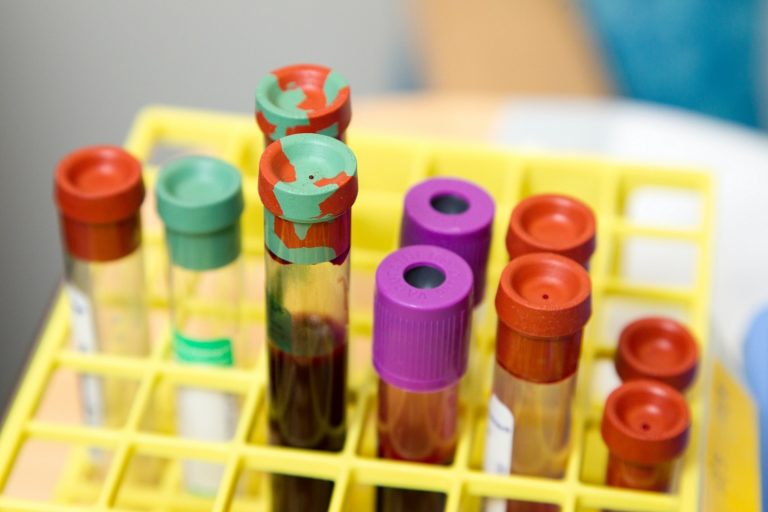October 20, 2021: “The U.S. Food and Drug Administration took action to expand the use of a booster dose for COVID-19 vaccines in eligible populations.
The agency is amending the emergency use authorizations (EUA) for COVID-19 vaccines to allow for the use of a single booster dose as follows:
The use of a single booster dose of the Moderna COVID-19 Vaccine that may be administered at least 6 months after completion of the primary series to individuals:
65 years of age and older
18 through 64 years of age at high risk of severe COVID-19
18 through 64 years of age with frequent institutional or occupational exposure to SARS-CoV-2
The use of a single booster dose of the Janssen (Johnson and Johnson) COVID-19 Vaccine may be administered at least 2 months after completion of the single-dose primary regimen to individuals 18 years of age and older.
The use of each of the available COVID-19 vaccines as a heterologous (or “mix and match”) booster dose in eligible individuals following completion of primary vaccination with a different available COVID-19 vaccine.
To clarify that a single booster dose of the Pfizer-BioNTech COVID-19 Vaccine may be administered at least 6 months after completion of the primary series to individuals 18 through 64 years of age with frequent institutional or occupational exposure to SARS-CoV-2.
“Today’s actions demonstrate our commitment to public health in proactively fighting against the COVID-19 pandemic,” said Acting FDA Commissioner Janet Woodcock, M.D.
“As the pandemic continues to impact the country, science has shown that vaccination continues to be the safest and most effective way to prevent COVID-19, including the most serious consequences of the disease, such as hospitalization and death.
The available data suggest waning immunity in some populations who are fully vaccinated.
The availability of these authorized boosters is important for continued protection against COVID-19 disease.”
“The amendments to the emergency use authorizations to include a single booster dose in eligible populations are based on the available data and information and follows the input from the members of our advisory committee who were supportive of the use of a booster dose of these vaccines in eligible populations,” said Peter Marks, M.D., Ph.D., director of the FDA’s Center for Biologics Evaluation and Research.
“We are also taking action today to include the use of mix and match boosters to address this public health need.
We will work to accrue additional data as quickly as possible to further assess the benefits and risks of the use of booster doses in additional populations and plan to update the healthcare community and public with our determination in the coming weeks.”
Authorization of Moderna COVID-19 Vaccine Booster Dose
To support the authorization for emergency use of a single booster dose of the Moderna COVID-19 Vaccine, the FDA analyzed immune response data from 149 participants 18 years of age and older from the original clinical studies who received a booster dose at least 6 months after their second dose and compared it to the immune responses of 1,055 study participants after completing their two-dose series.
The antibody response of the 149 participants against SARS-CoV-2 virus 29 days after a booster dose of the vaccine demonstrated a booster response.
The FDA also evaluated an additional analysis from Moderna comparing the rates of COVID-19 accrued during the Delta variant surge during July and August 2021, which suggest that there is a waning of vaccine effectiveness over time.
Safety was evaluated in 171 participants 18 years of age and older who were followed for an average of approximately six months.
The most commonly reported side effects by the clinical trial participants who received the booster dose of the vaccine were pain at the injection site, tiredness, headache, muscle and/or joint pain, chills, swollen lymph nodes in same arm as the injection, nausea and vomiting, and fever.
Of note, swollen lymph nodes in the underarm were observed more frequently following the booster dose than after the primary two-dose series.
Ongoing analyses from the FDA and the Centers for Disease Control and Prevention (CDC) safety surveillance systems have identified increased risks of inflammatory heart conditions, myocarditis and pericarditis, following vaccination with the Moderna COVID-19 vaccine, particularly following the second dose.
Typically, onset of symptoms has been a few days following vaccination.
The observed risk is higher among males under 40 years of age, particularly males 18 through 24, than among females and older males.
The Moderna COVID-19 single booster dose is half of the dose that is administered for a primary series dose and is administered at least six months after completion of a primary series of the vaccine.
Authorization of Janssen (Johnson and Johnson) COVID-19 Vaccine Booster Dose
The authorization for emergency use of a single booster dose of the Janssen COVID-19 Vaccine is based on the FDA’s evaluation of immune response data in 39 participants from a clinical trial including 24 participants who were 18 through 55 years of age and 15 participants who were 65 years of age and older.
The study participants received a booster dose approximately 2 months after their first dose, and the results demonstrated a booster response.
Overall, approximately 9,000 clinical trial participants have received two doses of Janssen COVID-19 Vaccine administered at least two months apart and of these, approximately 2,700 have had at least two months of safety follow-up after the booster dose. Janssen’s safety analyses from these studies have not identified new safety concerns.
Earlier analyses from the FDA and CDC safety surveillance systems suggest an increased risk of a serious and rare type of blood clot in combination with low blood platelets following administration of the Janssen COVID-19 vaccine.
This serious condition is called thrombocytopenia syndrome (TTS).
People who developed TTS after receiving the vaccine had symptoms that began about one to two weeks after vaccination. Reporting of TTS has been highest in females ages 18 through 49 years.
In addition, safety surveillance suggests an increased risk of a specific serious neurological disorder called Guillain Barré syndrome, within 42 days following receipt of the Janssen COVID-19 Vaccine.
Authorization of “Mix and Match” Booster Dose
Today, the FDA is also authorizing the use of heterologous (or “mix and match”) booster dose for currently available (i.e., FDA-authorized or approved) COVID-19 vaccines.
Following a presentation of clinical trial data from the National Institute of Allergy and Infectious Diseases, the Vaccines and Related Biological Products Advisory Committee’s discussion of information submitted for consideration, along with the agency’s evaluation of the available data, the FDA has determined that the known and potential benefits of the use of a single heterologous booster dose outweigh the known and potential risks of their use in eligible populations.
A single booster dose of any of the available COVID-19 vaccines may be administered as a heterologous booster dose following completion of primary vaccination with a different available COVID-19 vaccine.
The eligible population(s) and dosing interval for a heterologous booster dose are the same as those authorized for a booster dose of the vaccine used for primary vaccination.
For example, Janssen COVID-19 Vaccine recipients 18 years of age and older may receive a single booster dose of Janssen COVID-19 Vaccine, Moderna COVID-19 Vaccine (half dose) or Pfizer-BioNTech COVID-19 Vaccine at least two months after receiving their Janssen COVID-19 Vaccine primary vaccination.
In another example, Moderna COVID-19 Vaccine and Pfizer-BioNTech COVID-19 vaccine recipients falling into one of the authorized categories for boosters (65 years of age and older, 18 through 64 years of age at high-risk of severe COVID-19, and 18 through 64 years of age with frequent institutional or occupational exposure to SARS-CoV-2) may receive a booster dose of Moderna COVID-19 Vaccine (half dose), Pfizer-BioNTech COVID-19 Vaccine or Janssen COVID-19 Vaccine at least six months after completing their primary vaccination.
The agency recognizes that health care providers and COVID-19 vaccine recipients will have questions about booster doses.
The individual fact sheets for each available vaccine provide relevant information for health care providers and the vaccine recipients.
The agency encourages health care providers to also follow the recommendations that will be provided by the CDC following a meeting of their Advisory Committee on Immunization Practices and formal recommendations signed by the CDC director.”
https://www.fda.gov/news-events/press-announcements/coronavirus-covid-19-update-fda-takes-additional-actions-use-booster-dose-covid-19-vaccines









